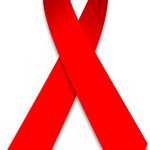Zim, Zambia and SA record maize surplus

Prosper Ndlovu, Business Editor
DESPITE the good rains received in the last cropping season, an estimated 47,6 million people are in need of food aid in Southern Africa with Zimbabwe, Zambia and South Africa being among the few states to record surplus harvest.
A resurgent agriculture sector saw Zimbabwe, for instance, increasing its cropping hectarage by 23 percent, riding on good rains and improved input support by the Government and its partners, to achieve about 2,7 million tonnes of maize harvest alone, according to official reports.
The harvest is said to be the highest in the country in over 20 years and is among the major drivers of the projected 7,8 percent economic growth this year.
In a latest Synthesis Report on the State of Food and Nutrition Security in the region, the regional bloc expressed concern over the continued exposure of member states to food and nutrition insecurity.
“Favourable rainfall led to improved cereal and livestock production over most of the region, with South Africa, Zambia, and Zimbabwe recording maize surpluses,” said Sadc.
“However, the above-average rainfall season was coupled with a destructive cyclone season, with five weather systems making landfall. These storms affected over 500 000 people and damaged over 219 000 hectares of farmland.
“Southern Africa suffers widespread food and nutrition insecurity. This year, in the 10 Sadc member States that submitted data, an estimated 47,6 million people are food insecure, which is a 5,5 percent increase from last year and 34,3 percent above the five-year average.”
In the face of the adverse impact of Covid-19, the situation demands urgent social protection programmes in affected States and shock-responsive social safety nets to be scaled up, as well as incorporating gender perspectives, said the bloc.
According to the report, some regional member States experienced localised prolonged dry spells during the last season, including Angola, DRC, Namibia, Madagascar, and Mozambique, with food shortages leading to acute malnutrition, which “has worsened markedly in these areas”.
The Democratic Republic of Congo (DRC), for example, is said to have recorded a 25 percent year-on-year increase in the number of people in IPC (integrated phase classification) Phase 3 and above, from 21,8 million to 27,3 million people, partly attributable to additional communities assessed.
The report notes that the situation in Madagascar has worsened significantly with the number of people food insecure increasing by 136 percent from last year and 1,31 million people facing IPC Phase 3 and above.
Sadc fears that rural food insecurity would peak between November 2021 and March 2022, by which time many smallholder farming families would have depleted their own food stocks ahead of the next harvest in April 2022.
Child malnutrition is of great concern in the region, said the bloc, stating that food and nutrition insecure communities would require urgent assistance in the form of food and/or cash-based transfers.
There is optimism, though, that the average to above-average cereal production in many member States would keep staple food prices below 2020 levels.
“However, even with sufficient production, lower or lost incomes due to Covid-19 have led to a reduction in household purchasing power,” reads the report.
“Diets continue to worsen as diverse varieties of food become unavailable, inaccessible, and unaffordable to the most vulnerable households, contributing to malnutrition. The pandemic is reversing the progress made in poverty reduction in the region over the past two decades.”
For many parts of the region, the Sadc said four of the past six rainfall seasons have been poor with the plight of ordinary citizens being exacerbated by civil unrest in eSwatini, and a volcano displacement in communities situated in southern DRC. The African migratory locust outbreaks also continued, with sightings reported in Angola, Botswana, Namibia, Zambia, and Zimbabwe.
By July 1, 2021, Southern Africa had recorded about 2,5 million Covid-19 cases and 72 000 deaths and the epidemiological situation remains unpredictable as new variants emerge, most recently the Delta variant, which has caused a surging “third wave”, reads the report.












Comments